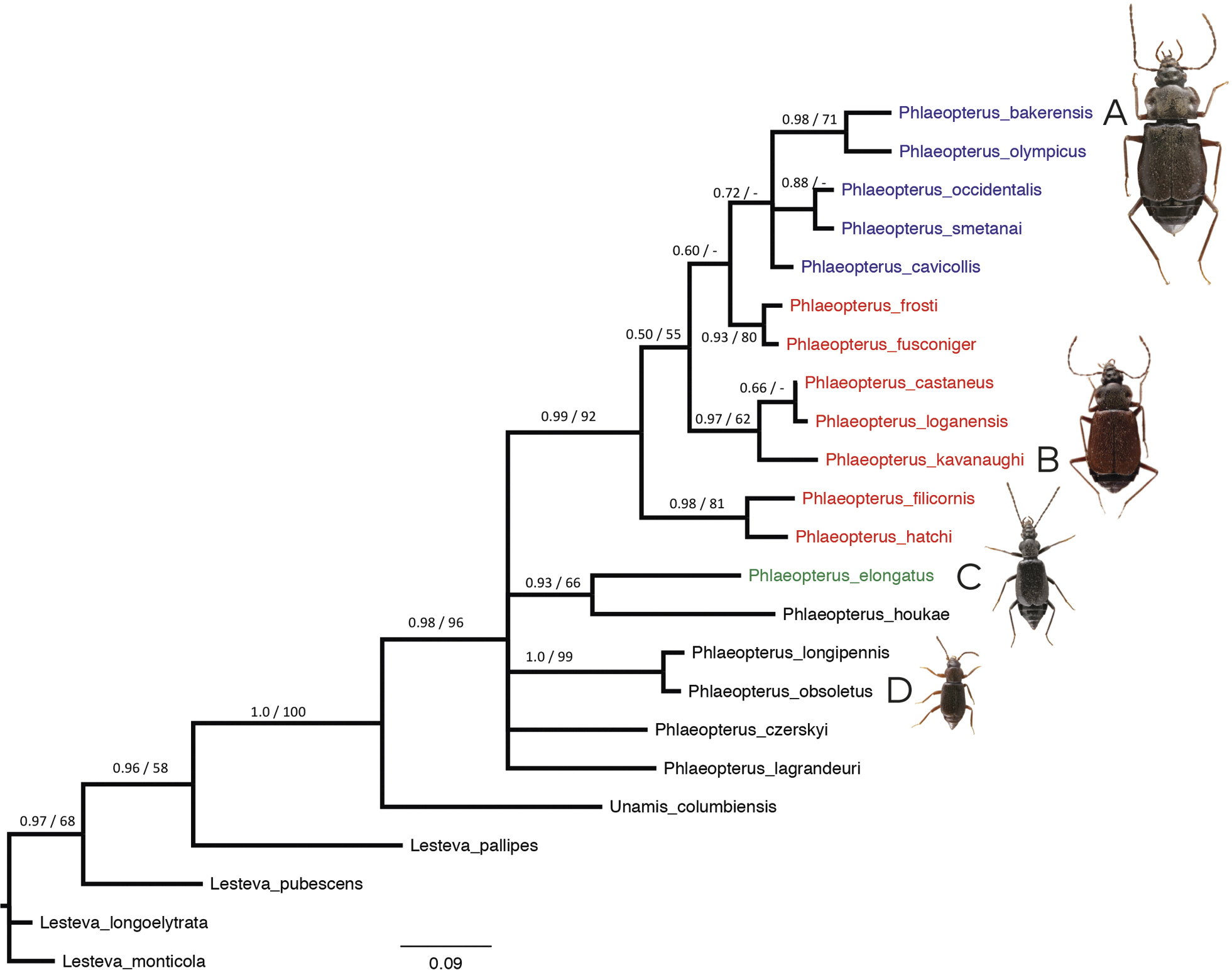
|
||
|
Evidence that large body size evolved twice: a clade of large bodied species (red and blue colors) and a separate origination of large body size in P. elongatus (green). Concatenated Bayesian analysis of 40 morphological characters and 404–654 bp of COI with posterior probability and maximum likelihood bootstrap support values near each branch with 18 Phlaeopterus ingroup species, 1 Unamis and 4 Lesteva outgroup species. Topology is a Bayesian 50% majority rule consensus phylogram. Clades with ML bootstrap values less than 50% are indicated with a “–“. Taxon names in blue and red are species with maximum body sizes over 6.5 mm. Blue indicates the largest species, those with maximum sizes over 8 mm, illustrated by A) P. bakerensis; names in red are species with maximum body sizes 6.5 to 7.9 mm with wide bodies, illustrated by B) P. kavanaughi; the name in green is for C) P. elongatus with a maximum body size of 6.4 mm, with an elongate body; names in black are species with maximum body sizes below 5 mm, illustrated by D) P. obsoletus. Beetle inset illustrations are scaled to approximate relative body sizes. |